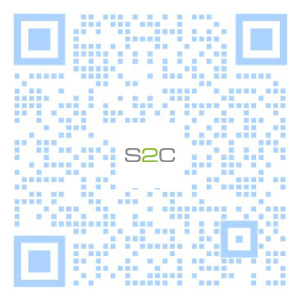
Choosing the Best Pin Multiplexing Method |
S2C has recently published a white paper “Choosing the best pin multiplexing method for your multiple-FPGA partition”. You can read the entire paper at www.s2cinc.com/resource-library/white-papers. I think that a portion of the paper is interesting enough on its own merit to be published separately.
Using multiple FPGAs to prototype a large design requires solving a classic problem: the number of signals that must pass between devices is greater than the number of I/Os pins on an FPGA. The classic solution is to use a TDM (Time Domain Multiplexing) scheme that muxes two or more signals over a single wire or pin (Figure 1).
Figure 1 Signals Multiplexed with a Fast Clock
This solution is still widely employed, and coupled with the advances in FPGAs, the obstacles to constructing a multi-device prototype are greatly reduced. The latest FPGAs offer advantages such as a very high number of industry-standard I/O, integrated high-speed transceivers, and LVDS (Low Voltage Differential Signaling) signaling.
Single-ended TDM uses a single-ended signal which can transmit physical signals at a speed up to 290 MHz (Virtex UltraScale). This is determined by dividing the TDM ratio (or signal multiplexing ratio) and taking into account setup, synchronization and board delays.
With a TDM ratio of 4:1, the system clock speed will be around 17.8 MHz. If the TDM ratio is increased to 16:1, the system clock speed will drop to less than 10 MHz. From this we can see that as the TDM ratio increases, the performance drop linearly.
However, using the LVDS I/O standard supported by Xilinx FPGAs, the physical transmission data rate between FPGAs can achieve up to 1.6 Gbps. This offers tremendous advantages over single-ended transmission, even when considering that a single LVDS signal requires a pair of single-ended pins.
Figure 2 Single-Ended TDM and LVDS TDM performance with Asynchronous mode
Figure 2 shows a comparison between Single-Ended TDM and LVDS TDM using Xilinx UltraScale devices. (Note: performance for different FPGA families vary.) Performance of TDM implemented with LVDS is better than Single-Ended TDM, especially for higher TDM ratios.
Figure 3 shows another comparison of Single-ended TDM and LVDS TDM. It shows the number of physical I/O needed to accommodate a given number of virtual I/O, assuming a system speed of 11 MHz:
Figure 3 Number of physical interconnections needed for a system running at 11MHz
This shows that for a system with a clock speed of 11 MHz, if 12800 virtual connections are needed, single-ended TDM consumes 1600 physical I/O. With LVDS TDM, this number is cut in half to 800.
Given the physical I/O limitation of FPGAs, partitioning becomes easier if less physical interconnections are needed. LVDS TDM has clear advantages over traditional Single-Ended TDM.
Combining the technique of using asynchronous LVDS TDM with a single clock cycle design, it’s possible to create a tool that can partition a design and perform automatic TDM insertion. Ideally, such a tool would be able to:
S2C’s Prodigy Play Pro is a tool that provides design partitioning across multiple FPGAs, and offers automatic TDM insertion based on an asynchronous TDM using LVDS.
Tags: FPGA, LVDS, Partitioning, S2C, TDM



This site uses cookies to collect information about your browsing activities in order to provide you with more relevant content and promotional materials, and help us understand your interests and enhance the site. By continuing to browse this site you agree to the use of cookies. Visit our cookie policy to learn more.